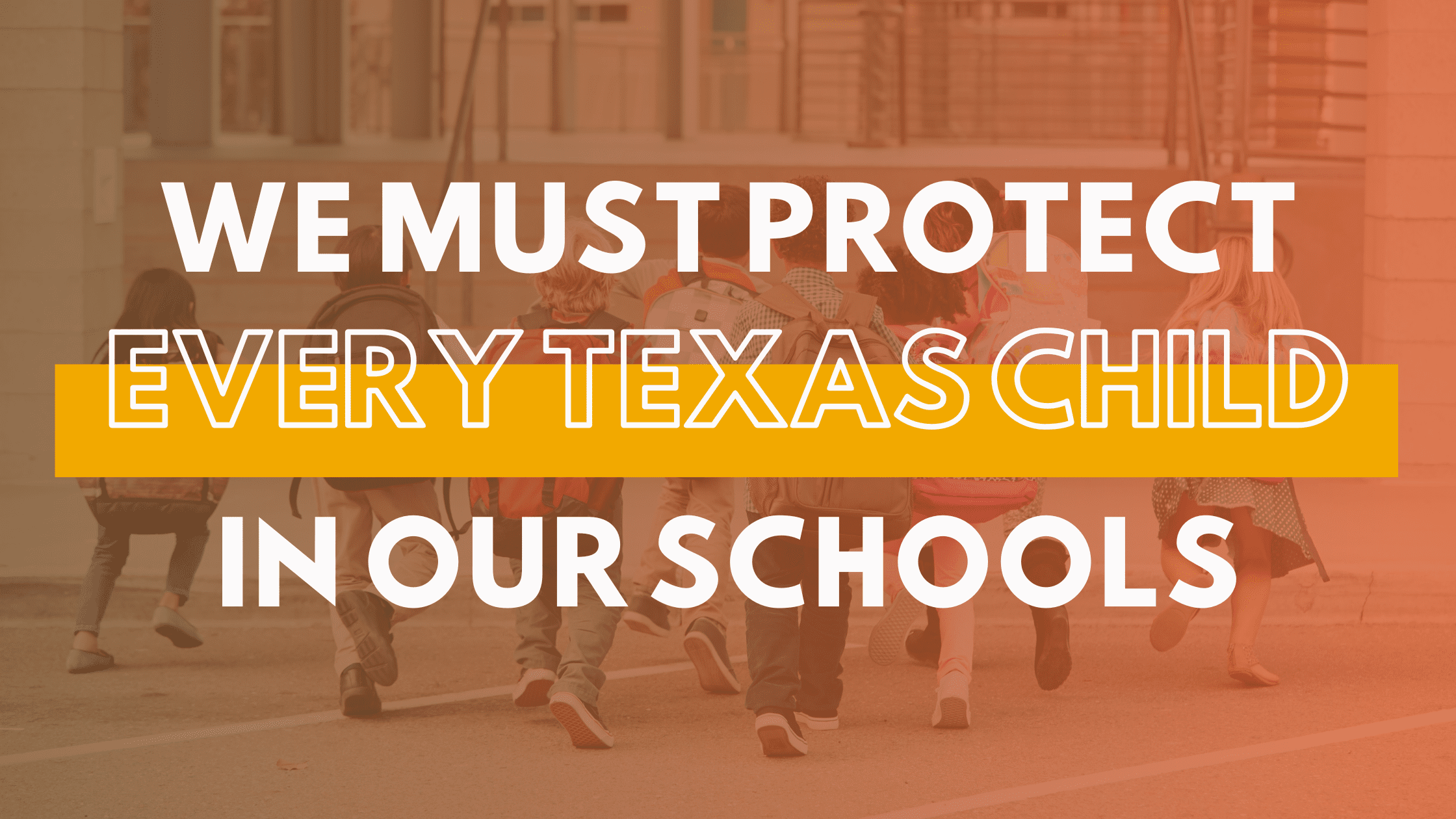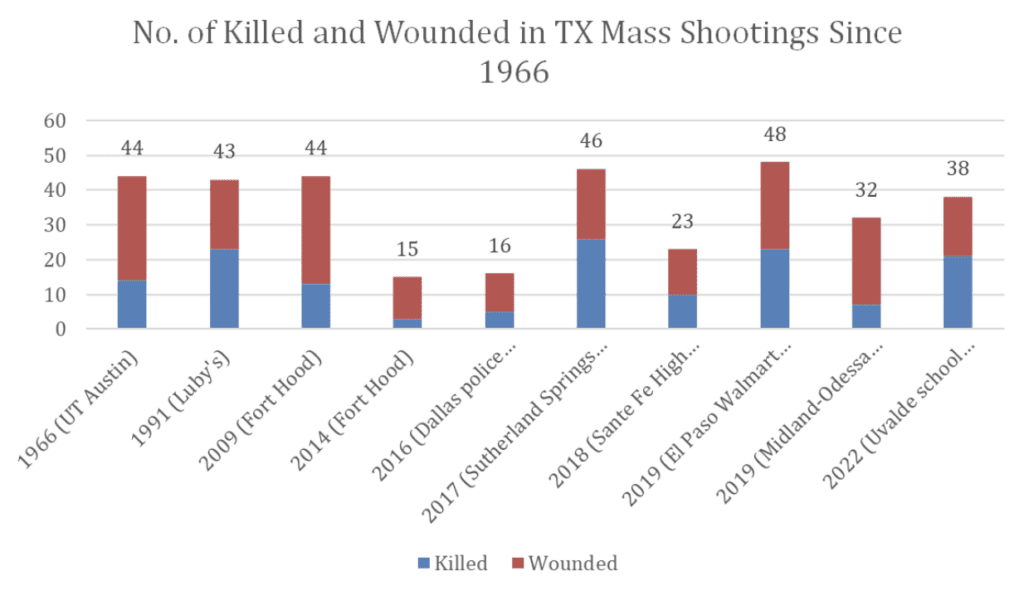Some public officials believe more teachers should be allowed to carry guns, including Attorney General Ken Paxton, who believes more school staff should be trained and possibly armed to respond to school shootings. Providing school personnel with guns will not make our students safe. Instead, it creates new risks and increases the potential for future tragedies. Using research-based approaches that encourage positive school environments, we can stop violent events from occurring on K-12 campuses.
Mass shootings at schools, colleges, churches, and grocery stores are not new to Texas. In 1966, Charles Whitman, a 25-year-old University of Texas student, killed 14 people and wounded more than 30 others from the UT tower. In 1991, George Hennard drove his pickup through the window of the Luby’s Cafeteria in Killeen, shot and killed 23 people, and wounded 20 others. Since 2009, 262 people have been injured or killed in mass shootings in our state. Of the fatalities, 10 were at Santa Fe High School in 2018, and 21 were at Robb Elementary in Uvalde this May.
Despite minor policy changes in response to these tragedies, Texas remains one of 17 states that do not explicitly ban school personnel from carrying guns in K-12 settings. As previously mentioned, Attorney General Ken Paxton believes school personnel should be trained and armed. According to a Texas AFT poll, however, 77% of school employees oppose being armed in school buildings. Additionally, bringing guns into school creates more risks for students, teachers, and school and district administrators.
More access to guns
Researchers have found that children will access guns if they know where they are. In a study conducted by the San Francisco General Hospital’s Department of Family and Community Medicine, over one-third of surveyed children younger than 10 reported handling a household gun. Children’s reports contradicted 22% of parents who reported having no knowledge that their child had handled a household gun.
Teachers can also misplace guns. Everytown, a gun safety advocacy and research group, reports that guns brought into schools were left in bathrooms, locker rooms, and sporting events. In Florida, a gun fell out of a teacher’s waistband while doing a backflip. Students can, and will, gain access to these guns when teachers do not properly secure them.
Increased risk of in-school shootings
Increasing the number of guns in schools will increase the risk of in-school shootings. Within the last ten years, there have been several instances of school employees bringing guns to work and injuring themselves and students, both intentionally and unintentionally. During a safety demonstration in a California school, a teacher accidentally discharged his gun and injured three students. Other incidents include a custodian who shot and killed two of his colleagues at a performance arts school in Florida, a disgruntled Spanish teacher who carried an AK-47 in a guitar case to shoot and kill the headmaster and then himself, and a math teacher shooting himself in his classroom.
New Liability Risks
Introducing firearms into school settings creates liability risks that insurance companies may not honor. In 2013, Kansas passed a law that armed school staff on school property. EMC Insurance Companies, which covered most Kansas schools, decided not to insure schools that allowed employees to carry firearms. Insurance companies that insure Texas schools may follow suit and sever relationships with school districts or charge higher premiums. This would produce costly effects for high-need districts.
Recommendations for Safer Schools
Arming teachers is not an effective approach to school safety. Instead of putting more firearms into our schools and risking the safety of our students, our partners at Texas Appleseed and the Intercultural Development Research Association (IDRA) have suggested the following:
- Increase the number of mental health staff members on school campuses. In a 2019 report, Texas Appleseed shared that few of the state’s districts are meeting the recommended ratios for counselors and mental health professionals. Appleseed shares that mental health professionals help foster positive school environments and are essential in violence prevention and student intervention. Despite this, the state has instead prioritized investments in more school resource officers and security measures. Appleseed found that some districts have a student-to-police ratio comparable to that of a mid-sized city. Furthermore, some districts have more police officers than counselors. Increased police presence on school campuses has a non-significant impact on reducing violence and makes students feel less safe.
- Make sure that school safety policies do not unfairly discriminate against students of color. Reactionary policies (i.e. putting more police in schools) in the wake of tragedies can disproportionately affect students of color. In Texas, 43% of majority-nonwhite districts have law enforcement or security presence, as opposed to only 12% of majority-white districts. This leads to an overrepresentation of students of color and those with disabilities in law enforcement interactions, despite research showing that they are no more likely to misbehave than other students.
- Use violence risk assessments in schools. Risk assessments are used to predict the likelihood of a student exhibiting violent behavior. These assessments usually involve law enforcement, school administrators, teachers, and mental health professionals. This team comes together to gauge a student’s risk to their school community and respond accordingly. In a 2015 study of the Virginia Student Threat Assessment Guidelines, schools that used the guidelines showed:
- Lower short-term suspensions than schools that did not use the guidelines and/or used their own guidelines;
- Increased student reports of fairer discipline; and
- Lower levels of student aggression and a positive school climate.
Firearms in schools do not make our students safer. Funding mental health staff, creating equitable safety policies, partnering with families and communities, and using risk assessments do make students safer. Speaker of the House Dade Phelan sent a letter earlier this month supporting similar initiatives in our schools. If our leaders promote policy decisions that put our students at risk, then our schools will not be places of learning but of fear and uncertainty. We must advocate for policies that protect every Texan — especially the ones in our schools.

